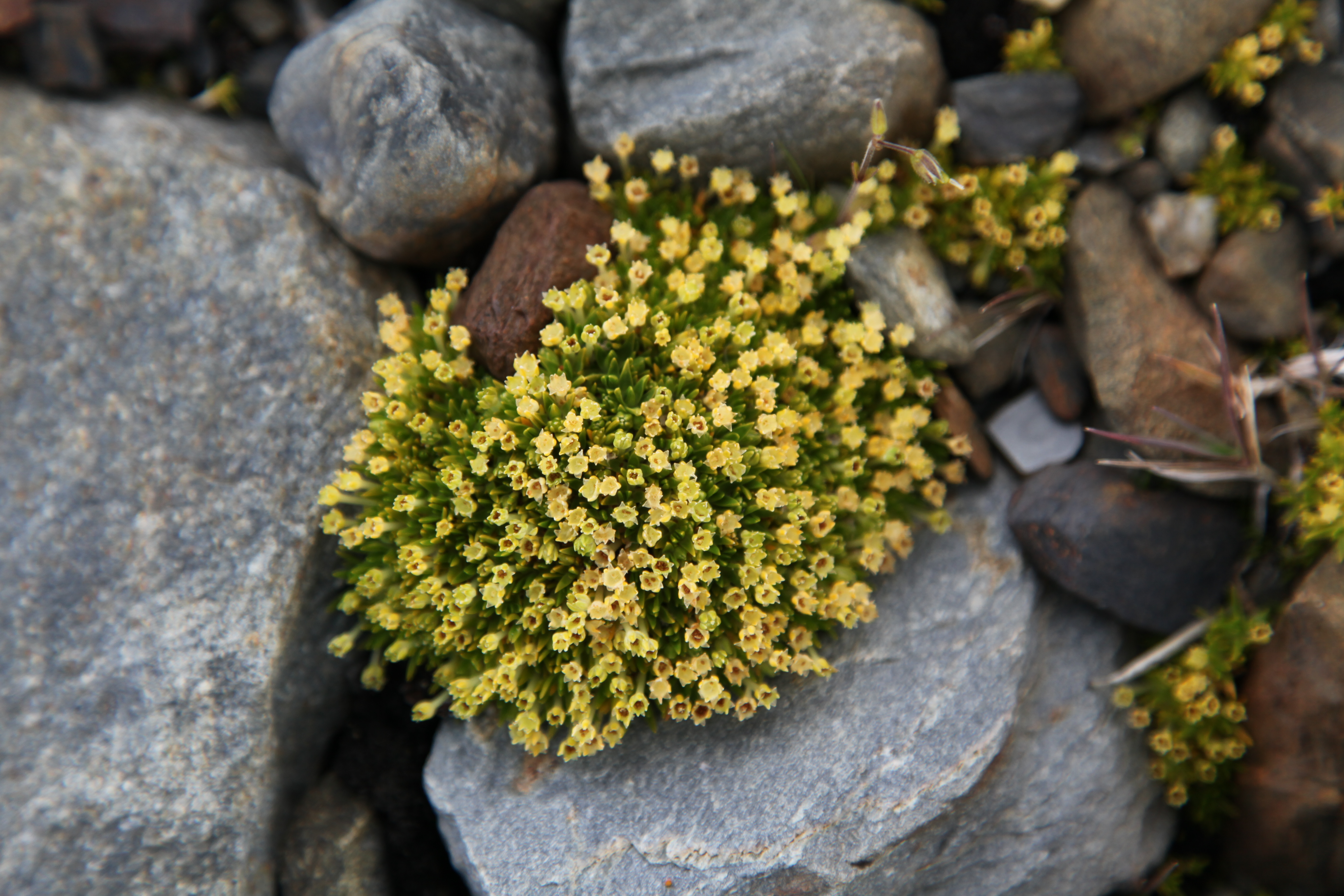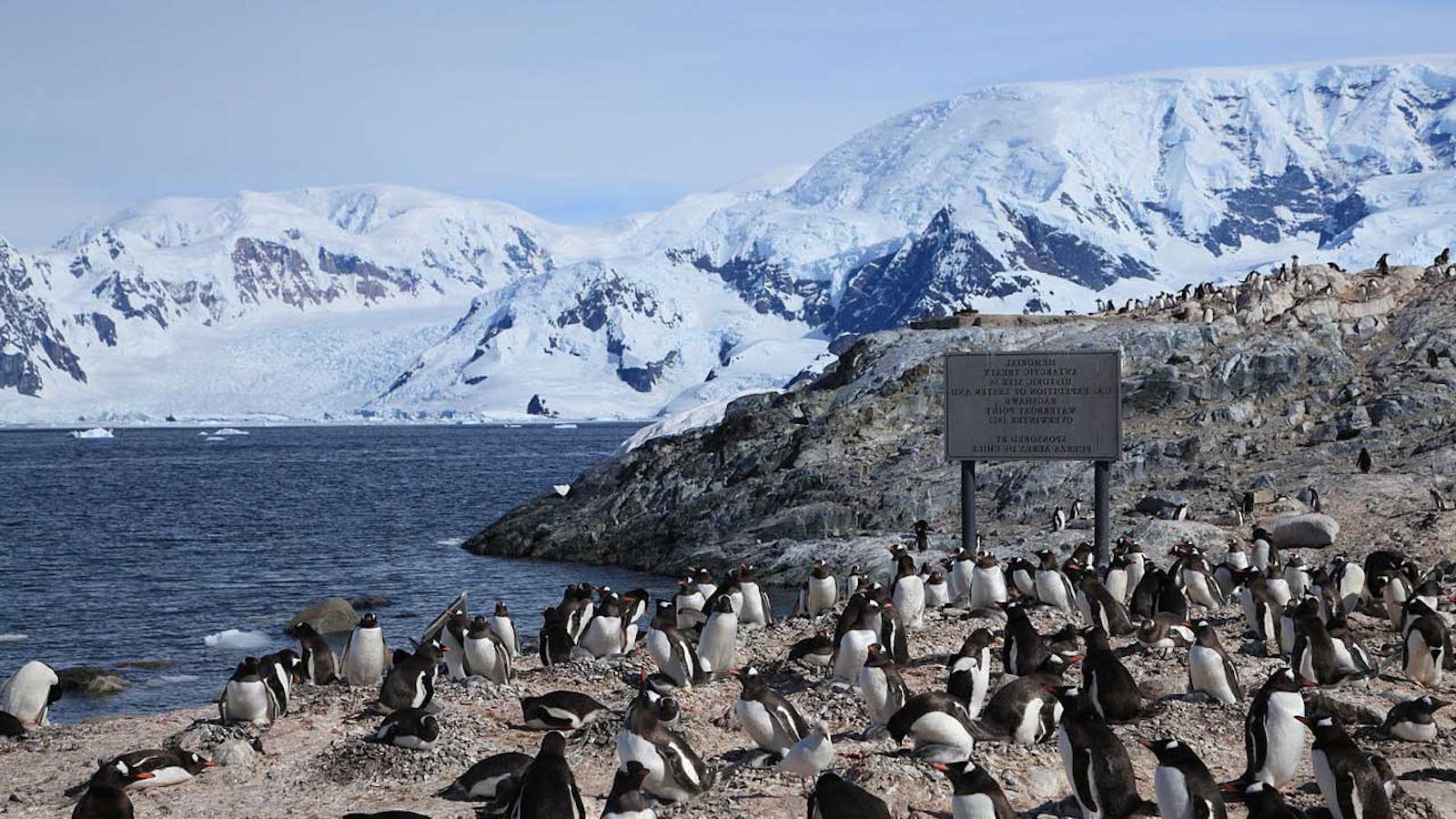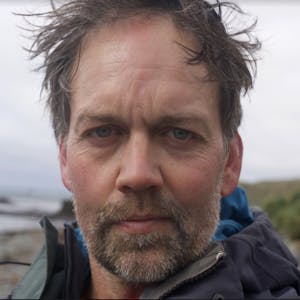Northwest Antarctic Peninsula Tundra
The ecoregion’s land area is provided in units of 1,000 hectares. The conservation target is the Global Safety Net (GSN1) area for the given ecoregion. The protection level indicates the percentage of the GSN goal that is currently protected on a scale of 0-10. N/A means data is not available at this time.
Bioregion: Antarctic Peninsula & Scotia Sea (AN2)
Realm: Antarctica
Ecoregion Size (1000 ha):
N/A
Ecoregion ID:
127
Conservation Target:
N/A
Protection Level:
N/A
States: Antarctica
This ecoregion is one of the most biologically diverse of all the Antarctic ecoregions. It includes all of the ice-free land on the northern tip and western side of the Antarctic Peninsula. The area is heavily glaciated and interspersed with permanently ice-free areas patchily distributed on the eastern and western side of the Peninsula, where over 99% of the biodiversity lives. Some of the larger areas of connected ice-free land of this ecoregion occur on Deception Island and on the South Shetland Islands, two of the better-studied areas of the entire Antarctic region. The ice-free land that comprises this ecoregion typically rises steeply to a high point of 2,650 m.
This is probably the best surveyed of all the Antarctic ecoregions, with over 450 species of lichen and approximately 200 species of plants recorded. Of the latter, most belong to mosses (190 species) with a small representation of liverworts (10 species). Both species of Antarctic endemic vascular plant occur in this region—the Antarctic hair-grass (Deschampsia antarctica) and the cushion-forming pearlwort (Colobanthus quitensis). The region is also home to the invasive grasses Poa annua and Poa pratensis, although the latter has recently been eradicated.

The flagship species of the Northwest Antarctic Peninsula Tundra ecoregion is the Antarctic pearlwort.
Invertebrates are also diverse, with 67 species recorded, including springtails, mites, tardigrades and nematodes. This ecoregion is also the only one of the only Antarctic regions that has native populations of higher insects, with two species of midge (Belgica antarctica and Parochlus steinenii) found on the South Shetland Islands. Several non-native invertebrate species have also been recorded and include springtails, mites, a fly, and a midge.
The region is particularly rich in breeding birds and other wildlife. Four species of penguin (Gentoo, Adélie, Chinstrap, and Macaroni) breed in numerous colonies, including the world’s largest colonies of Chinstrap penguins on the South Shetland Islands and 67 Adélie penguin colonies thought to contain over 600,000 breeding pairs. Other nesting seabirds in the region include shags, gulls, terns, several species of petrel and the South Polar skua. Antarctic fur seals and Southern elephant seals are common in this ecoregion; Weddell, Crabeater, and Leopard seals are also present.
This ecoregion also includes parts of Deception Island, an active volcano in the South Shetland Island that creates geothermally heated soil, which supports exceptional biodiversity, particularly with regards to plants and microbes. There are at least 18 endemic species of moss or lichen as well as the largest known community of the cushion plant Colobanthus quitensis.
This ecoregion was the first part of Antarctica to be formally discovered, with William Smith on the brig Williams landing on the South Shetland Island in 1819. Today this ecoregion has the highest density of human activity of the entire Antarctic region. There are 35 national stations or other permanent infrastructure, from 16 nations, including Argentina (9), Brazil (1), Bulgaria(1), China (1), Chile (9), Ecuador (2), Germany (1), Korea (1), Peru (1), Poland (1), Russia (1), Spain (2), Ukraine (1), United Kingdom (2), United States (1), and Uruguay(1). Somewhere between 1,000–2,000 scientists, support staff and occasionally tourists visit these stations each year.
The region has extensive tourism, with up to 500,000 landings in some years at over 100 sites. Highly visited sites include Neko Harbour (~19,000 landings) and Whalers Bay on Deception Island (~15,000 landings). There are 20 Antarctic Specially Protected Areas (ASPAs) in the eco-region, most of which are in the South Shetland Islands. Fourteen of these ASPAs are designated on the grounds of protecting biodiversity or for ecological reasons. These ASPAs cover around 74 km2, or around 1% of the ecoregion, covering 50% of species known to occur there and 24% of all Antarctic species.
Given the extremely high levels of human activities, priority conservation actions for the next decade are to: 1) undertake research to understand and mitigate environmental impacts of human activity on the environment; 2) initiate systematic conservation planning processes to identify vulnerable areas and species that are in need of protection; and 3) research the impacts of non-native species and the feasibility of their eradication.
-
-
- Terauds, A., S. L. Chown, F. Morgan, H. J. Peat, D. J. Watts, H. Keys, P. Convey, and D. M. Bergstrom. (2012) Conservation biogeography of the Antarctic. Diversity and Distributions 18:726-741.
- Terauds, A., and Lee, J. R. (2016) Antarctic biogeography revisited: updating the Antarctic conservation biogeographic regions. Diversity and Distributions 22:836-840.
- Chown, S.L. & Convey, P. (2007) Spatial and temporal variability across life’s hierarchies in the terrestrial Antarctic. Philosophical Transactions of the Royal Society B: Biological Sciences, 362: 2307–2331.
-
Cite this page: Northwest Antarctic Peninsula Tundra. Ecoregion Snapshots: Descriptive Abstracts of the Terrestrial Ecoregions of the World, 2021. Developed by One Earth and RESOLVE. https://www.oneearth.org/ecoregions/northwest-antarctic-peninsula-tundra/
-



